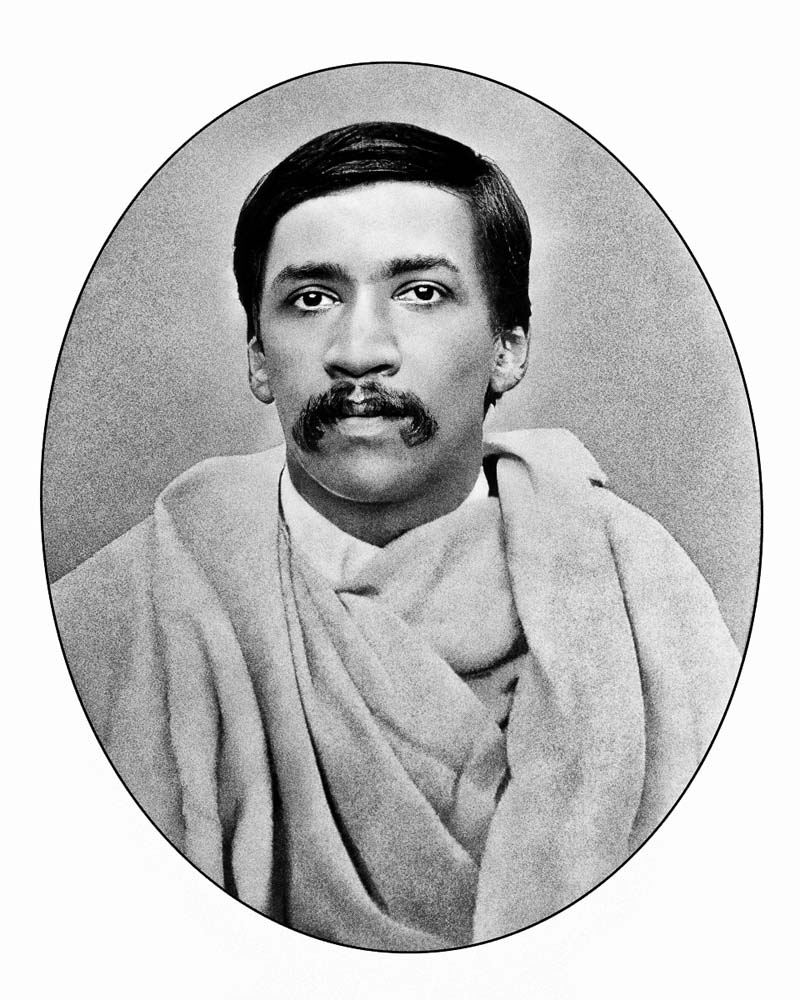Aurobindo was one of those unique figures who left an indelible stamp in 20th century Bengal.
As we celebrate the 150th birth anniversary of Aurobindo Ghose, it is worthy to re-look at the way he poured a stream of fresh inspiration into the national consciousness which later erupted like a volcano and ended up sweeping off colonial powers.
Born on Aug. 15, 1872 to an aristocratic Bengali family — at their 8, Theatre Road residence in Calcutta — Aurobindo was sent off to England at the age of seven, where he did his schooling at Shepherd Bush. He thereafter embarked upon a brilliant academic career at the hallowed Kings College, Cambridge.
Irish Sinn Fein Movement
However he had no interest to become an ICS and returned to India with Maharaja Sayajirao Gaikwad in 1893 as a French teacher at Baroda college. He was considerably influenced by the Irish Sinn Fein movement and the Italian Risorgimento during his England stint. Upon his return, he immediately began writing in the nationalistic journal “Indu Prokash.” He linked up resistance groups in undivided Bengal and Madhya Pradesh and also established connect with Sister Nivedita and Lokmanya Tilak.
The Indian National Congress had just been formed a decade back but it was already showing two emergent distinct streams: a moderate stream, led by Dadabhai Naoroji, Gopal Krishna Gokhale and an extremist stream, led by Bal Gangadhar Tilak, Bipin Chandra Pal and Lala Lajpat Rai, affectionately referred to as Lal-Bal-Pal.
Anushilan Samity
Aurobindo subscribed to the latter viewpoint and aimed directly at “full independence” rather than a policy of “petition, prayer and protest” towards the British.
Upon his relocation to Calcutta post the announcement of partition of Bengal, he was appointed the first principal of National College (currently Jadavpur University) intended to impact national education to Indian youth. However he resigned from the position in 1907 due to increased political activities.
In touch with the radical wing of the Congress, as well as revolutionaries in Bengal through his brother Barindra Ghosh, he slowly emerged as the mastermind behind the emerging radical movement. He started establishing a series of youth clubs, most prominently “Anushilan Samity” in Calcutta. His passionate editorials in the leading periodicals like “VandeMataram” and “Karmayogin” became the inspiration of a generation of revolutionaries including Bagha Jatin.
Alipore Bomb Case
The wave of spiritual nationalism started to move beyond the city of Calcutta and Dacca to the towns and villages of Bengal. He wrote “We recognize no political object of worship except the divinity in our motherland, no present object of political endeavour except liberty and no method of action as politically good or evil except as it truly helps or hinders our progress towards national emancipation.”
Ghose was arrested in the infamous Alipore Bomb Case. However due to the untiring efforts of his counsel Deshbandhu Chittaranjan Das, he was acquitted in 1909.
During his period in jail, his view of life was completely changed due to spiritual experiences and realisations. In conjunction with his goal of country’s liberation, Aurobindo developed a program of constructive actions which laid the foundation for later movements led by Mahatma Gandhi. Aurobindo thereafter dedicated himself to his spiritual and philosophical pursuits.
Nobel Prize
In 1910, following an irrevocable spiritual command, he left Calcutta for Chandannagar and then to the French settlement of Pondicherry where he lived the last forty years of his life. He created some of the most remarkable spiritual literature of all times including Life Divine, The Human Cycle, The Synthesis of Yoga, and the epic poem Savitri -the longest poem ever written in English language. He was nominated twice for Nobel Prize.
Heavily influenced by European philosopher Bergson, Aurobindo believed that no evolution is possible without involution, which involves the succession of the divine to the world of matter. His theory of creation established that matter passes through various stages of development from Eternal Spirit to the multiplicity of the phenomenal world. Aurobindo’s collaborator Madame Alfasa, also known as Mother, met him first in 1914 and later joined him in the Yoga as well as in running Sri Aurobindo Ashram at Pondicherry and founding Auroville.
Higher And Larger Consciousness
Aurobindo looked at the concept of freedom not only for the sake of the subcontinent but for humankind as a whole. He advocated the importance of coordinating the claims of freedom with those of equality and association. On his 75th birthday, he mentioned his five targets which he worked for in five stages of his life:
• A free and united country
• Resurgence and liberation of the people of Asia and claim its rightful place in the progress of humanity
• A world union forming the outer basis of a fairer and brighter nobler life of mankind
• Spiritual gift of Indian subcontinent to the world
• A step in evolution which would raise man to a higher and larger consciousness and begin the solution of problems which have perplexed and vexed him
Trivia: Aurobindo’s birthplace in Calcutta housed the office of the first government of Bangladesh. On Apr 17,1971, it took the office of oath there with Syed Nazrul Islam as its acting president. For nine months, this government in exile functioned from the same location which also served as the headquarters of the Bangladesh war.
To read more… please visit https://indiacurrents.com/from-bengali-aristocrat-to-indian-nationalist-to-philosopher-a-look-back-at-aurobindo-ghose/

